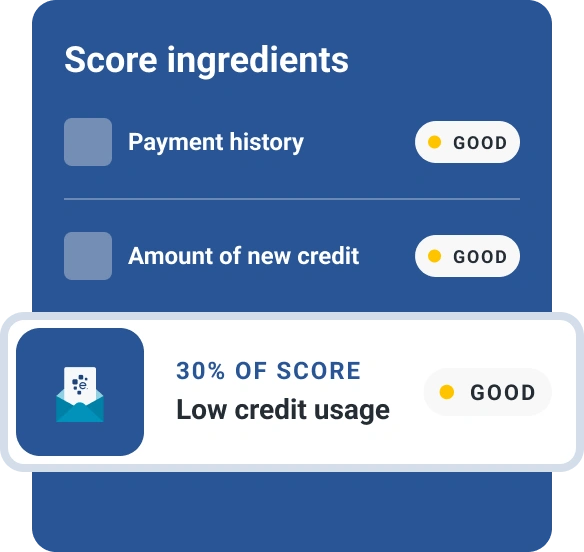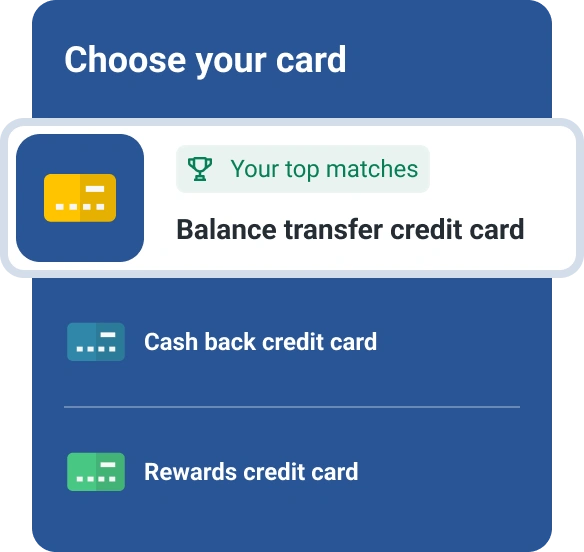What Is a Balance Transfer?
Quick Answer
A balance transfer is when you move existing debt to a new credit card. It is often done to transfer debt to a credit card that has a lower annual percentage rate or an introductory 0% rate. It’s worth it when you have good or excellent credit and can reasonably pay off the transferred balance within the intro period.

A balance transfer is when you move existing debt to a new credit card with an introductory 0% annual percentage rate (APR). The main goal of a balance transfer is to save on interest charges while paying down debt. But it's just one of several options for getting to a zero balance on credit cards or loans.
You're a good candidate for a balance transfer if you have good or excellent credit, you can reasonably pay off the transferred balance within the 0% intro APR period and you'll qualify for a high enough credit limit to transfer the planned amount. Here's what you need to know about balance transfers and how to do them.
What Is a Balance Transfer Credit Card?
Balance transfer credit cards allow you to pay no interest on your balance for a period of time, giving you the opportunity to get a break from high rates and more efficiently tackle your debt.
To make a balance transfer, apply for a new credit card that offers a low or 0% introductory APR on balance transfers. Once approved, you'll request the transfer of your existing balances to the new card, which pays off your old accounts.
Types of Debt You Can Pay Off
While it's common to pay off high-interest credit card debt using a balance transfer credit card, you may also be able to move personal loans, car loans or other types of debt to it, depending on the issuer.
Who It's Best For
A balance transfer credit card is best if you:
- Have a credit score of at least 670
- Have outstanding, high-interest balances
- Can afford to pay off your entire transferred balance within the 0% APR promotional period
Keep in mind that you'll pay balance transfer fees, which are typically 3% to 5% of the transferred balance amount. For that reason, a balance transfer may not be worth it if you could pay off your debt very early in the promotional period, since that could mean you'd pay more in fees than you'd save on interest. If the balance transfer limit the issuer sets doesn't allow for the balance transfer you'd hoped for, that's also a sign it may be best to choose an alternative.
Pros and Cons of a Balance Transfer
A balance transfer can lead to interest savings, but it's not available to—or ideal for—everyone. Here are the main benefits and drawbacks of a balance transfer:
| Pros | Cons |
|---|---|
| Could result in significant interest savings | Balance transfer fees of 3% to 5% of transferred balance |
| Some issuers allow cardholders to transfer personal loans, auto loans and other non-credit-card debts to a balance transfer card | Limits on how much you can transfer |
| Some cards offer generous rewards, though it's best to wait until after the balance transfer is paid off to use the card for purchases | Limited time to make a transfer (such as within 60 days of account opening) |
| Consolidate multiple credit card balances into one payment, making it easier to keep track of your finances | Not usually an option for applicants with poor or fair credit |
How to Find the Right Balance Transfer Credit Card
To find the right balance transfer credit card, compare different card offers to weigh their fees and other features against each other. Here are factors to consider:
- 0% APR period: Check how many months you'll receive a promotional APR on the transferred balance. Balance transfer cards typically offer an introductory 0% period of 12 to 21 months. Some may also give you 0% APR on purchases for a chunk of time, but be wary of adding to your debt.
- Low balance transfer fee: It's common for issuers to charge balance transfer fees of 3% to 5% of the transferred balance. Aim for a card with fees on the lower end, and ideally one that charges no fees at all.
- Rewards: If you plan to use the card after you pay off your debt—perhaps for everyday purchases that you'll pay off each month—consider a card with cash back rewards in spending categories you use regularly.
- No annual fee: Ideally, choose a card with no annual fee. Some may charge no annual fee for the first year and then $95 per year, for example; that's likely only worth it if you'll use the rewards enough to justify the fee (and you plan to bring your balance to zero each month to avoid accruing debt).
Important Considerations Before Doing a Balance Transfer
Before opting for a balance transfer, keep the below considerations in mind:
- Balance transfer fees: Calculate how much you'll pay in transfer fees on your balance, and make sure it's worth it compared with the interest you'll save.
- Credit score impact: Any time you apply for new credit, a hard inquiry will appear on your credit report and remain there for two years. This will generally affect your credit score for up to a year and will lead to a score drop of up to five points. A new credit card account will also lower the average age of your accounts, which could also negatively affect your scores. But paying down debt using a balance transfer card responsibly has the potential to strengthen your credit in the long run.
- Length of introductory period: Check that the introductory period the card offers is long enough for you to pay off your full transferred balance. Carrying a balance beyond the promotional period means paying the card's standard APR, which could reach nearly 30%.
How to Do a Balance Transfer
Here's how to complete a balance transfer, and how to make the most of your card:
- Choose the right balance transfer credit card. Look for cards that offer a 0% intro APR for 12 months or longer and as low a balance transfer fee as possible.
- Verify the credit limit and fees. You may receive a limit that is less than your total debt. Check the card's fees, transfer and purchase APR, the length of its promotional period and the circumstances under which you could lose access to the 0% intro APR deal, including making a late payment.
- Determine how much to transfer. Consider the new card's balance transfer limit when planning your transfer. The limit may mean you're only able to transfer a portion of an existing card's balance. If you have multiple debts, moving the balance with the highest interest rate will likely save you the most.
- Complete your transfer. Verify with the issuer whether you can make the transfer online, and check that you have the necessary information handy, including the original account number. Make sure to complete the transfer within the time limit the issuer specifies. If you're using a paper check to complete the transfer, make sure you fill it out completely and accurately to prevent any delays.
- Use the new card wisely. Continue making payments on your previous balances until your new card's issuer confirms the transfer is complete. Don't make any purchases while you pay down balances on the new card. Additionally, calculate the monthly payment you'll have to make in order to pay off the balance by the end of the 0% APR period. Stick as closely to that schedule as you can.
Is a Balance Transfer Right for You?
When deciding whether you should make a balance transfer, take these steps:
- Check your credit score. If it's not in the good or excellent range, look into alternatives to a balance transfer card.
- Calculate likely fees. Identify how much you'll likely pay in balance transfer fees on your planned transfer. Make sure it's not more than you'd save on interest compared with your current debt-paydown plan.
- Look at your total debt. If you have the credit score to qualify, consider next how much debt you want to transfer. It should be enough to justify any fees, but not more than you can feasibly pay off during the promotional period.
Learn more: Should I Make a Balance Transfer?
Alternatives to Balance Transfers
If a balance transfer isn't possible for or attractive to you, consider these alternative options:
- Debt consolidation loan: This is a personal loan that functions similarly to a balance transfer credit card. The lender pays off your debts, and you'll then repay the lender in fixed monthly payments at an interest rate determined by your creditworthiness. These loans may come with an origination fee, and it's important to make sure you can qualify for a low enough interest rate to save money.
- Debt management plan: If you can't qualify for a balance transfer credit card or a debt consolidation loan, you can work with a nonprofit credit counseling agency, which can negotiate with your creditors to get you lower monthly payments for a fee.
- DIY debt payoff: You can also pay off debt by paying more than the minimum on your credit cards or loans using a debt payoff method such as the debt avalanche or debt snowball.
The Bottom Line
Under the right circumstances, a balance transfer can lead to significant savings. Paying off a balance at 0% APR can be a meaningful step toward freedom from overwhelming debt. It's important to ensure, though, that you not only qualify based on your credit history, but that your particular combination of debts, interest rates and potential fees make the process financially worthwhile.
Best balance transfer cards
Need to consolidate debt and save on interest? See if you qualify for intro offers like 0% intro APR up to 21 months based on your FICO® Score.
See your offersAbout the author
Brianna McGurran is a freelance journalist and writing teacher based in Brooklyn, New York. Most recently, she was a staff writer and spokesperson at the personal finance website NerdWallet, where she wrote "Ask Brianna," a financial advice column syndicated by the Associated Press.
Read more from Brianna

